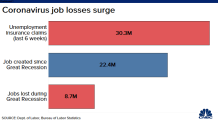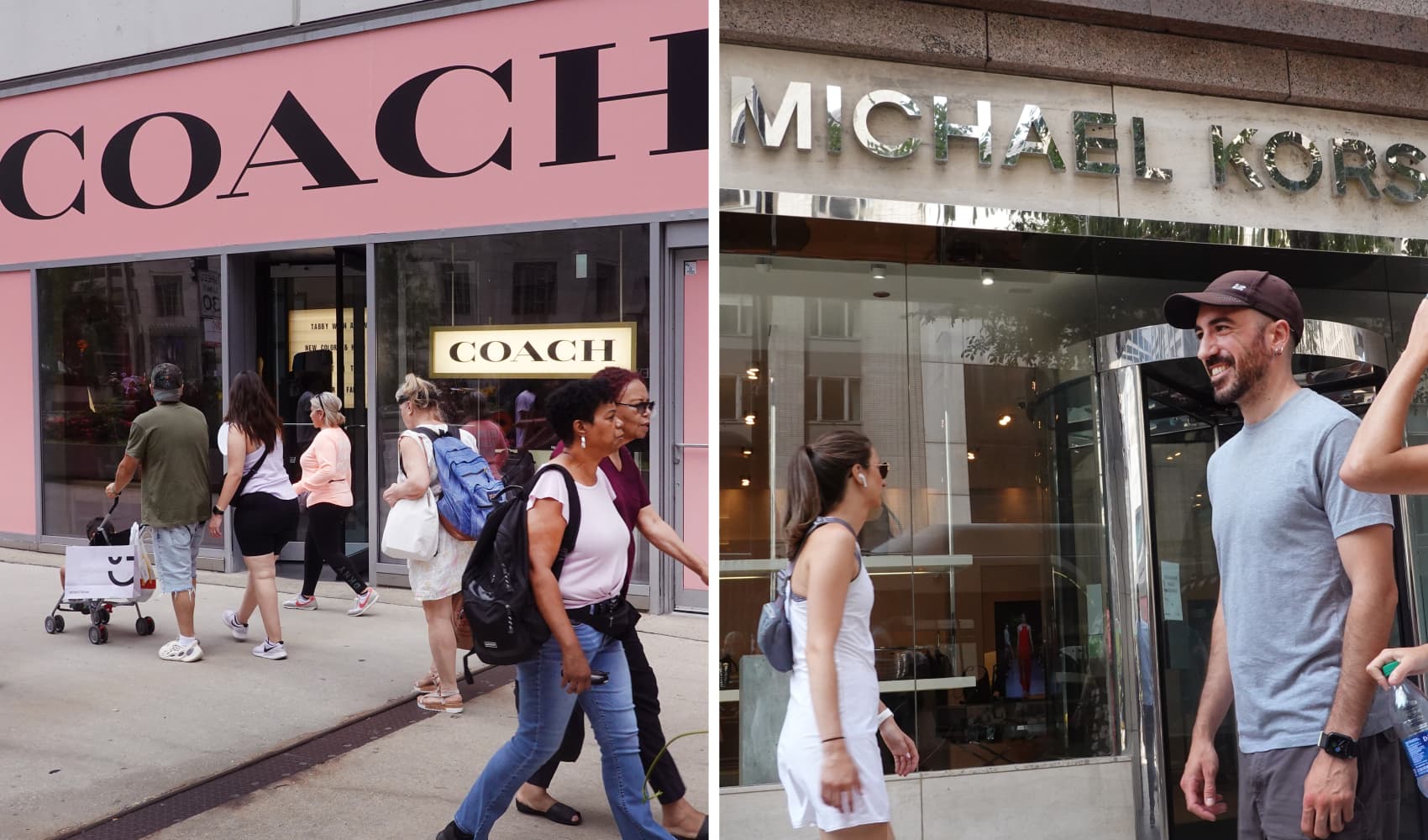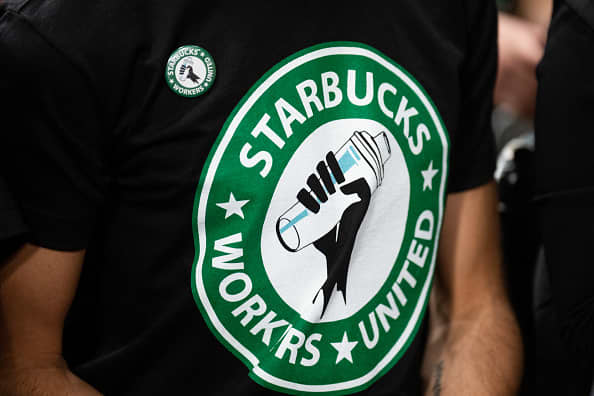
Jobless workers may be getting a sizable unemployment check as a result of the recently enacted federal coronavirus relief law.
That pay boost is unlikely to continue past July.
Nearly 18 million Americans are currently collecting unemployment benefits, according to the most recent figures from the U.S. Labor Department. That’s the highest level in history.
The $2.2 trillion coronavirus relief law, known as the CARES Act, enhanced jobless pay for these individuals.
The law raised weekly benefit amounts, increased the duration of that pay and extended benefits to previously ineligible workers such as the self-employed. However, the extra cash, currently $600 a week, will end after July 31. Some states are ending it a week earlier, on July 25.
The federal government is funding the bigger payout to jobless Americans who qualify for unemployment benefits. That’s in addition to whatever weekly benefits are paid by the states, which vary widely in generosity.
U.S. & World
The weekly increase is substantial relative to payouts prior to the CARES Act, according to labor economists.
The average worker received about $378 a week in state unemployment benefits prior to the relief law, according to the Labor Department. The law boosts that weekly total to $978 a week — a 159% increase.
Payouts have never been as generous in the entire history of the unemployment insurance program, which dates to the 1930s, said Gary Burtless, an economist and senior fellow at the Brookings Institution.
Barring an extension, jobless pay will be reduced after July to the weekly benefit paid by the state where the recipient had been employed. State benefits replaced approximately 40% of wages for the average worker prior to the coronavirus pandemic.
Workers furloughed or laid off after July wouldn’t receive the $600-a-week increase, experts said.
“Then, they’ll have to make do with whatever the regular unemployment-insurance benefit is in their state,” Burtless said.
More than 30 million Americans have filed for jobless pay since mid-March, more than erasing all job gains since the Great Recession.
Most states pay up to 26 weeks of unemployment benefits. However, the CARES Act boosted the duration of state unemployment benefits by 13 weeks through the end of the year.
Someone who loses a job after July would still be eligible for the increased duration of state benefits, Burtless said.

Lawmakers would likely extend state benefits past the 39-week maximum if high unemployment levels persist, he said. But it seems unlikely Congress will extend the $600 payments past July, Burtless said.
“Congress, I suspect, will prolong the 39 weeks after Jan. 1,” he said. “But the $600 add-on, I’m more doubtful they’ll extend that.”
Some lawmakers have voiced concern that the $600 payments allow some workers to collect more than 100% of their prior paychecks while unemployed.
This situation applies primarily to low- to moderate-wage workers, and depends on the generosity of a particular state.
This story first appeared on CNBC.com More from CNBC:
- 42-year-old retiree who lost $600,000 due to pandemic: ‘I feel foolish for retiring early’
- Mark Cuban: If I had to start a side hustle now to make extra money, this is what I’d do
- Why many employees are hoping to work from home even after the pandemic is over



